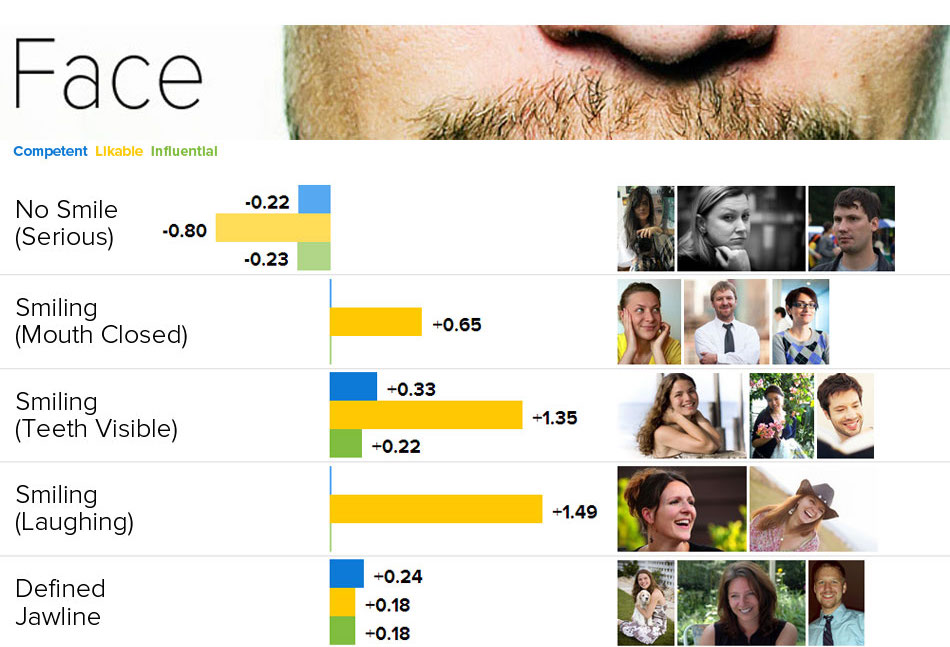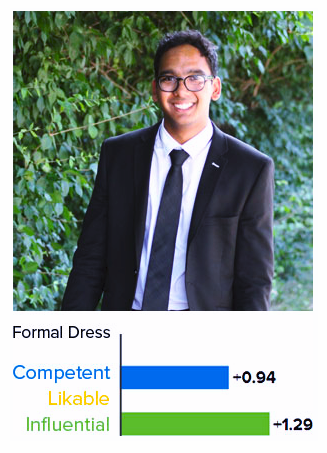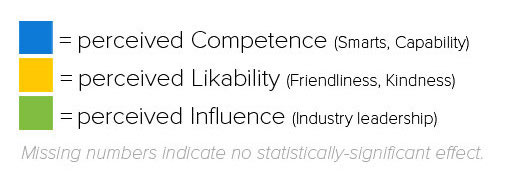
Believe it or not, your headshot is tantamount to the perception not just of you, but of your likability, competence and professionalism in your business. Your photo has an impact on the connection you make with your contacts (and let’s hope it is a positive one). Look at the results of these studies and find out what your headshot is really saying about you. Plus, you’ll find 8 ways to prepare for your next photo session so you get the best photos possible.
While meeting in person and videos have the most impact on someone getting to know you more, photos of you (including your headshot) are the next in line for helping new contacts build a relationship with you that is more memorable than a logo or just text communication. This is why you want to use your headshot and photos of yourself across your marketing as much as you can (tastefully, of course).
Are you trustworthy?
According to a study in the Personality and Social Psychology Bulletin, happier-looking faces are viewed as being more trustworthy “and angrier-looking faces seen as more untrustworthy.” People who looked happy and unhappy were both viewed as being competent, but when it came down to being asked which person would be chosen as a financial advisor, a happier-looking person was the clear preference.
This means that if you want to be perceived as being more trustworthy, your headshot has to include a happier expression.
Are you like-able and competent?
PhotoFeeler conducted a study based on more than 60,000 ratings of perceived competence, likability, and influence for 800 profile photos in their database.
They found that, “By far the most impactful characteristic…is a particular kind of smile.”
And, when teeth are shown, likability increases significantly as well as competence, and influence.
Funnily enough, a laughing smile increased likability the most.


Now, in photos with no smile where the subject looks serious, it had an unsurprisingly negative impact on likability, competence, and influence.
Don’t Just Opt for a Selfie
According to PhotoFeeler’s profile study, photos that are zoomed in just on one’s face lose competence and likability points. Selfie photos may be easy to take, but they aren’t perceived as professional and won’t make a good impression.
Are you influential?
The factor that had the biggest impact on competence and influence was formal, professional clothing.
As much as we may wish this wasn’t true, formality shouldn’t be forgotten. If you want to maximize your influence points, make a good first impression starting with a professional outfit in your headshot.


What is your current headshot saying about you and your business?
When it’s time to update your headshot, here are 8 reminders to help you get the best photos possible.
1. Pick a Photographer With a Good Track Record
Ask for recommendations from your colleagues, friends and family. Then, do your homework on their recommendations by reading reviews and looking at their prior work. Chances are you’re going to live with this photo for a few years before getting new headshots, so don’t just go with the cheapest photographer you can find or a friend of a friend or a hobby photographer. Make sure you like their work and that they have positive reviews from previous clients.
A photographer’s work speaks for itself. If you don’t like the photos they’ve done for other professionals, chances are you won’t like yours. Look at their portfolio (and beware of a non-existent portfolio) because you want to have an idea of what you’ll be getting.
Make sure you also pick a photographer that has done photos that are like the ones in your vision. Natural lighting will be different from studio lighting so if you want a studio backdrop, go with a photographer who has great examples of studio backdrop photographs – play to their strengths so you know you’ll be happy. If they’ve done more weddings and family portraits than headshots, will their style help you look trustworthy and competent? If you like their examples, you’re probably in good hands.
2. Check Out the Competition for Ideas
Do some research and scope out your colleagues and competition for headshot inspiration to show your photographer. You can visit their websites or LinkedIn profiles to find out what you like and don’t like. You don’t necessarily want to look like them, but you can get some helpful ideas for poses, backgrounds, and so on.
3. Get Freshened Up
When you make your photoshoot appointment, be sure to make an appointment with your hair stylist or barber so you can have a fresh, clean, put-together look when it’s time for your photoshoot. Do you really want to immortalize that slightly shaggy hair or grown out hair color for the next however many years?
4. Choose an Outfit that Helps You Feel Confident and Fits Properly
You don’t want to feel too restricted, but you also don’t want to have something that looks too baggy and unprofessional. Remember, if you want to appear more influential, go with a more formal look.
If you won’t know what to wear, professional photographer Keli Comm has an excellent guide on clothing, accessories, glasses and more here.
For more tips on how a suit should fit, turn to this.
5. Avoid Looking Straight On at the Camera
Angling your body with one shoulder closer to the camera and one shoulder away from the camera slightly has a slimming effect on your body profile, according to professional headshot photographers. Who doesn’t want a more flattering photo?
Your photographer should be guiding you through poses that are flattering, but in case they aren’t you can think in terms of angles.
6. Why Not Get Full and Action Shots Too
Although a headshot from the shoulders up is the most common type, why not ask your photographer for a few shots that have your whole body or some staged lifestyle images of you in action in your business tasks that you’ll be able to use on your websites, flyers, billboards and other advertising or marketing avenues. You’re going to all that effort to look great and have a fantastic headshot, so why not get the other two types of photos so you’ve got your bases covered? Be sure to tell your photographer ahead of time so that they can plan accordingly.
A Note About Action or Lifestyle Photos: They’re In and Memorable
Action or lifestyle photos are considered candid, less structured photos. One professional photographer, Autumn Mooney shares the benefit that, “Your brain is programmed to remember it. Candid portraiture requires a higher level of engagement and brain activity than your traditional front on, eyes-to-camera headshot. We’ll consider what the person is doing, apply the information to what we know about them already, while simultaneously summing up their facial features. Memory hacks say the secret to remembering is to apply a visual connection. So a little string of seemingly insignificant information is subconsciously ensuring the image will be remembered and easily recalled.”
Memorability is key! So, consider getting some candid action or lifestyle photos you can use.
7. Ask for Web and High Resolution Files
If you plan on printing anything (holiday card, postcards, banners, print ad, billboard, and so on) you want high resolution images (300 dots per inch or dpi). Web images require a much lower resolution (72 dpi) so that is why you want both formats – web and high resolution.
You can always make a larger resolution smaller, but it doesn’t work the other way around. If you don’t now the right photo editing tricks and try to increase the size of a low resolution image you’ll be left with blurry, bad quality prints that you definitely don’t want.
8. Don’t Be an Unintentional Trickster
Trust is your best friend in your line of business. If someone only has your headshot to go on and you look completely different today (in person) compared to 5 or 10 years ago when your headshot was taken, your contacts are going to be in for a big surprise when it comes time to meeting you in person. Help them feel comfortable that you are who you claim to be. Show your contacts that you aren’t a trickster by having your headshot updated frequently (at least every 3 years).
You want them to meet you and feel at ease that you look like the person they’ve been reading about and seeing online.
Get more details from PhotoFeeler‘s infographic below:





